As the first of several “Comic Book Roundtable” events to be held at the Soho Gallery of Digital Art under the auspices of gallery owner John Ordover and former Marvel editor, author, and educator Danny Fingeroth, this event exploring the life and legacy of Dr. Frederic Wertham was planned for the occasion of Wertham’s 118th birthday, but in the lead up to the event, recent developments in scholarship about the controversial comic reformer shed new light on the evening’s subject matter. In February 2013 Librarian, professor, and scholar Carol Tilley discovered, after examining Wertham’s papers held by the Library of Congress, that some of Wertham’s methods and reports were questionable, sparking debate in comics scholarship and among comics fans.

“Surely You’re Joking Dr. Wertham” hit the controversy head-on by bringing together a distinguished panel for discussion, including Tilley, comics writer, editor, and educator Denny O’Neil, author and educator David Hajdu, practising physician, psychiatrist, and author Sharon Packer, and author, editor, art director, and cartoonist Craig Yoe. The Soho Gallery provided excellent accompaniment to the event in the form of Wertham-related images and quotes displayed as a digital exhibit, and hosting a reception afterward.

The evening opened to a thoroughly packed-in audience, among whom were many scholars and authors who have shown a public interest in Wertham’s career and legacy, including James Reibman, the official Frederick Wertham biographer designated by Wertham’s estate. Host and moderator Danny Fingeroth provided an introduction to Wertham in the form of slides including pictures of Wertham in and out of official capacity as a clinical psychiatrist working with children, and also reminded the audience of the other books Wertham authored aside from his now legendary Seduction of the Innocent, a critique on the “influence of comic books on today’s youth”, published in 1954. This placed Wertham within the context of other cultural reactions of the time that questioned the sex and violence being depicted in comics as appropriate for young readers.
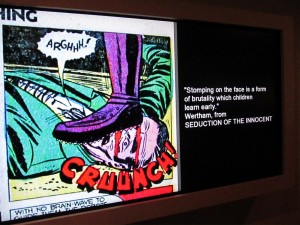
Tilley started off the panel discussion by explaining exactly what her recent research has uncovered about Wertham’s work. While her original intention was to locate materials relevant children’s education, she found “other things” that she didn’t expect to find among Wertham’s documents which she found “well-organized” in a “couple of dozen plus boxes” at the Library of Congress. The documents included copies of Wertham’s other research papers and speeches spanning his career, among which she found “discrepancies” and “some indication that he did things like combine the testimony of kids” or “broke apart” the testimony of one child “into four or five” in order to use quotes. This practice also resulted in evidence of “deleted or added” phrases from the children’s testimony that Wertham presented in Seduction of the Innocent and other works. This resulted, Tilley said, in a general “perception” of evidence in Wertham’s book that was “not the same as the actual case” of his research materials. When questioned about whether these changes were negligible or whether they altered the meaning of the children’s testimony, she confirmed that these “additions and word changes did change the meaning of testimony”. While Wertham’s book has often been criticized for its “lack of attribution” in footnotes or bibliography, Tilley feels that she has “seen personally” that his use of sources was not exacting enough. For those interested in Wertham’s legacy, this was something of a bombshell, though Tilley has been public about some of these findings previous to the evening’s discussion.
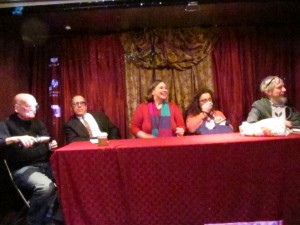
Hajdu then commented on Wertham as a figure, reminding the audience that Wertham is often a “handy symbol” of a wider movement against comic book excesses, and even a “personification” of the “cynicism toward comics in the late 40’s and 50’s”, even though he didn’t start this trend personally. Hajdu explained that even “newspaper comics incited criticism” prior to Wertham’s career and were often perceived as “crude, anti-literate” and examples of “defiant behavior” that raised public concern. The Catholic Church, particular, he noted, were active in inspiring state legislation against comics, due to their belief in the “power of aesthetics and the power of art” for both positive and negative influences on human behavior.

[Packer, Yoe, and Fingeroth]
O’Neil, himself raised Catholic, confirmed that his “first encounter with the (comic) witch hunters was in the pages of The Catholic Digest” and that he, as a young person “read and believed” that superhero comics, particularly, were potentially harmful. He related, to the audience’s amusement, that former Marvel editor Roy Thomas “as a kid” had participated in a book burning in Missouri where he “burned comics he was not interested in”, but rescued others he liked. Tilley briefly added that she had discovered evidence that librarians, too, had participated in comic burning and attempted to keep them out of libraries during this period because they were seen as “disruptive”.

Packer suggested that Wertham’s book title, Seduction of the Innocent, might have spoken particularly to a Christian demographic because of its suggestion of the massacre of the innocents by King Herod related in the New Testament of the Bible. This led to a reassessment among the panellists of Wertham’s title, since its original version was “All Our Innocents”. Fingeroth pointed out that this change made the title “very pulp sounding” and therefore more sensational.
Yoe’s background on the subject of juvenile delinquency as an author, and also his discovery of the “fetish art” of Joe Shuster confirmed that there were real-life implications for the more violent aspects of comic art, such as the case of the Brooklyn Thrill Killers who killed indigent people and molested women and when interviewed by Wertham as an expert witness, confessed to being inspired in their deeds by Shuster’s artwork. Yoe, however, prompted a wide-ranging and at times heated discussion on the subject of exactly how and when Wertham’s papers at the Library of Congress had been made available for research purposes. Both Yoe and Hajdu, upon requesting access in the past, had been denied use of the papers since they were “sealed” until the children who participated in the studies had passed away. “In many ways, I respect Dr. Wertham”, Yoe said, but “the Library of Congress is our library” and its contents “should be seen” regardless of the circumstances behind their compilation. Outspoken attendee and Wertham biographer Reibman, who was granted access to the papers at a much earlier date in order to work on his book, disagreed with Yoe’s statement in favor of “freedom of information”, arguing that sealing Wertham’s papers at the library was part of the “terms of the gift” to the library. Reibman’s frequent interjections on behalf of Wertham during the event contributed to a rather heated atmosphere.
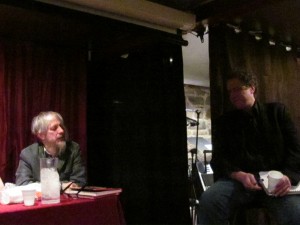
Yoe questioned further why some individuals, and not others, were then granted access despite the terms of the gift. Hajdu chimed in that he had requested access “dozens of times” but had been denied despite his academic credentials. Yoe asked Tilley if, based on her experience as a librarian, this discrepancy was “unusual” or not. Tilley confirmed that in her experience, the sealing of the papers while at the Library of Congress and then granting access to only those individuals sanctioned by the estate of the deceased, was indeed “unusual”. Attendee Karen Green, Graphic Novels Librarian at Columbia University, also commented that while “archives can be restricted”, for public documents this practice is “not usual”. Tilley provided further information about the situation by explaining that she was obliged to sign an agreement with the Library of Congress about the materials she accessed, even though a large portion of the Wertham papers consisted of “newspaper clippings” which “shouldn’t be restricted” anyway. Yoe brought some levity to the rapid fire questioning and often terse dialogue between he and Reibman by pointing out that Hajdu closely resembled a young Frederic Wertham and ought to have just turned up at the library, saying “I am here to see my papers”. Though Hajdu found the comparison amusing, he said “That’s the most offensive thing I’ve ever heard”.

[O'Neil and Hajdu]
Fingeroth then gathered the reigns of the discussion as moderator to direct attention back to the panelists and away from the discursive arguments breaking out among audience members. Fingeroth asked O’Neil, specifically, if he had felt any “lingering hesitation” about comics after his experience with The Catholic Revue in childhood. O’Neil related that Wertham’s legacy, but particularly the Comics Code had impacted his career in comics. He was involved in “several public arguments” with administrators at comics publishing companies, wherein comics supporters felt the need to argue “comics are good, not evil anymore”. O’Neil’s personal feeling has always been, and still is, he said, that “If it’s censorship, it’s bad”, and often felt frustrated by the “vagueness of the language” in the Code itself, often leading comics creators to create elaborate avenues to get around the letter of the Code. He related a particularly frustrating incident where an IRONMAN story involving a “six story tall monster” crushing a police car was censored because it “showed disrespect to the police car” even though it also showed policemen being very brave in their fight against the monster. This kind of “idiocy” in the Code he particularly objected to, and added his motto that “blind worship of authority figures whether or not authority figures had any authority” should never be supported.
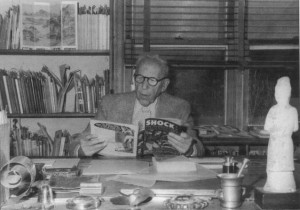
At this point, it was relevant to clarify that Wertham was not the founder of the Comics Code, though his work certainly paved the way for its development. Yoe reminded the audience that Wertham was, in fact, a progressive who was in support of the freedom of the press. It was more that Wertham “created the climate”, O’Neil supplied, which led to the Senate hearings, which led to the drafting of the Code. Both Yoe and O’Neil agreed that comics publishing was, in fact, in a very low economic position at the time of the Senate hearings anyway, due to the rise of paperback novel sales and TV watching. Yoe and O’Neil continued to discuss whether a “rating system” couldn’t have been created, rather than the unilateral Comics Code, in order to steer children away from more disturbing comics. Hajdu pointed out that the rating system was not in effect in Hollywood, by comparison, until the 1960’s, so there was not a particularly clear model to instate for comics at the time.

Fingeroth asked the panelists, and in particular, Packer, whether Wertham’s research was purely “anecdotal” or whether he furnished “hard statistics” when working with children. Packer provided some context as a clinical psychiatrists about the methods of the time during Wertham’s career. She compared Wertham to Sigmund Freud and pointed out that though “Freud was celebrated at that time”, “much of his original psychological literature” was “just as baseless” as Wertham’s methods. Tilley added that her survey of Wertham’s papers revealed that his “data was rich”, but it was just “how he used it rhetorically” that was “questionable”. Yoe commented that even though his rhetorical use of his data might lead us to view Wertham with increased suspicion, in the big picture, Wertham made a “pretty good case. Many comic books were not good for young children” in term of their content.

[Tilley and Packer]
Fingeroth took the question to a finer point. Did Wertham, he asked, in the opinion of the panelists, “take too many liberties” or not? Tilley stood her ground by asserting that “scientific investigation” requires accuracy, and a failure of accuracy is troubling from a scientist. Tilley added that her “personal sense” from working with the papers is that Wertham “cared more about getting rid of the comic book industry” than about his public cause of helping children develop in a psychologically healthy atmosphere. Though he certainly “cared for kids”, she reminded, she still felt that Wertham used children as “leverage” to achieve this greater goal of attacking the comics industry. One of the things that gave her a less than sterling impression of Wertham’s personality was discovering detailed transcripts that he “noted meticulously” of phone conversations that contained potentially harmful gossip about people who he saw as enemies in his career. He “collected information”, she said, “looking for weak spots” in the lives of people he wanted to undermine, particularly people who acted as “consultants for the comic book industry”.
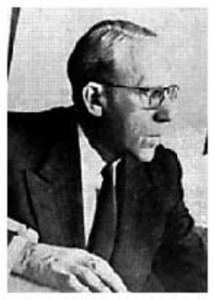
Fingeroth asked about Wertham’s movement, in his later career, toward criticism of the film industry and whether Wertham might have seen “comics as a stepping stone to a higher agenda” as a “career path”, but the general consensus among panelists seemed to be that comics were more easily attacked as a less profitable industry early in Wertham’s career, and that the tide of criticism had generally turned toward film around the time of Wertham’s developing interest in film. Film itself had, by the mid to late 60’s, become more overtly violent with works like Bonnie and Clyde.
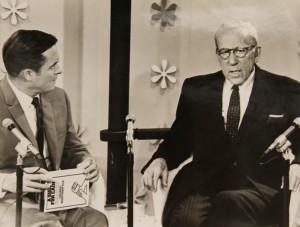
The rather charged atmosphere during the panel discussion gave way to an extensive question and answer period involving the audience and spanned a number of subjects. Did the distaste the comic book industry came to feel for Dr. Wertham result in a generally negative portrayal of psychiatry within comics? Yoe agreed that there are certainly plenty of “sinister psychiatrists” portrayed in comics tradition, and Packer supplied examples from Batman mythology including the Arkham family. O’Neil added that the character Harley Quinn was originally assigned to “cure” the Joker of his madness and instead was “driven nuts” herself. A more pointed question was posed about whether the possibility that Wertham skewed his evidence really made the questions he was asking about the role of comics at the time irrelevant. Hajdu fielded this question by commenting that the “weakest criticism of Wertham is that comics can’t affect minds and hearts”. As an art form, Hajdu argued, comics certainly do have impact and can “transform people”. “Comics have that power”, he reminded.

O’Neil weighed the issue by confessing that as a comics creator “You launch a given work and you have no way of knowing how it’ll bounce” and he often worried during his early career what impact particular comic stories might have on “kids already imbalanced”. O’Neil gave and example of his decision-making when he declined to include a “martial arts move” in one of his comics because it was “simple and damaging” and judged that kids might too easily learn to implement it. The audience, of course, immediately wanted O’Neil to demonstrate the deadly move, but he refrained in the interest of safety. For the same reason, O’Neil never allowed Molotov cocktails in his works, sure that it was too much of a “temptation” for kids to “see if it would work” building their own.

The Beat’s own Heidi MacDonald asked a rather burning question from the floor, one that continues to puzzle readers and comics historians alike: “Why do you think he attacked comics specifically? What did he hope to get out of it?”. The panelists answered in various ways. Yoe felt pretty strongly that Wertham was, in fact, motivated primarily by the fact that he “cared about kids” and was worried about the impact of comics. Packer analyzed Wertham a little by pointing out that Wertham himself, despite being married for many years, had no children of his own and this might have created a kind of “displacement” of concern for children that drove him to extremes. Hajdu simply stated that he felt Wertham to be “attracted to sensationalist cases” whether as an expert witness in extreme criminal cases or his research. He was, Hajdu said, a “publicity hound” at heart. Even Yoe added the admission that without a doubt Wertham had a “raging ego” driving his career.

Questions continued to circle back to the central role of Tilley’s new research on Wertham’s inconsistencies. How do we reassess Wertham based on the incorrectly conveyed details of his research, which clearly skewed his information in order to more sensationally and fundamentally support his thesis, when the “big picture” of his message, that extreme violence and sex in comics can be inappropriate for child readers, does seem sensible? Fingeroth presented a list of Wertham’s more “progressive” tendencies, stating that it’s possible to “go through a checklist of Wertham’s beliefs and agree except for comics” and respect many of his social contributions.
The final assessment of the panelists revealed some consensus out of a wide-ranging interrogation of Wertham’s method and legacy. O’Neil reminded the audience that Wertham was certainly not the “black-hearted villain” that many comics fans feel him to be, but he did detrimentally present those working in comics, “demonizing” them and making them out to be the “seducers and corruptors” of society, a crusade that damaged comics for decades to come. Yoe felt that the fundamental problem with Wertham’s whole approach to his subject was not necessarily the assumption that comics could be damaging to young minds, but that he “didn’t see that comics could be an art form”, and never commented on their positive potential as an “educational” resource. Yoe left the audience with the question, a lingering one, “Why couldn’t he see that?”. If Wertham had seen the potential of comics as a positive force, no doubt our current view of his work would also be more balanced on the whole.
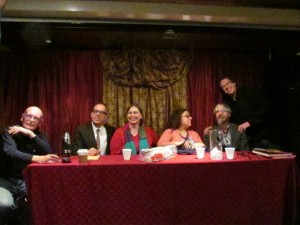
[The panelists and their moderator]
A predictably lively, but amicable, discussion period followed during the reception for the event, but if attendees expected definitive answers about the implications of Tilley’s new research on Wertham, they were left to their own devices. The panel discussion did provide solid context for Wertham’s life, work, and even a little for his motivations, as well as some solid information on what exactly Wertham’s failings as a researcher might be. Whether audience members were “pro-Wertham” or “anti-Wertham” initially, the discussion opened up new facets of his personality and work for further thought. Frederick Wertham may be less of a mystery now in the light of new research, but if anything, he’s even more of an enigma, confirmed as a complex figure. Learning more about Wertham changes perception of comics history, and that’s bound to change even more as scholars pay closer and closer attention to the records left behind in collections, personal archives, and thankfully, libraries.
The Comic Round Table events will continue this Spring at the SOHO Gallery for Digital Art with another hot topic in comics right now, the openly anti-gay position of Orson Scott Card and his work on SUPERMAN entitled “The Man of Steel vs. Orson Scott Card” on April 10th.
Hannah Means-Shannon writes and blogs about comics for TRIP CITY and Sequart.org and is currently working on books about Neil Gaiman and Alan Moore for Sequart. She is @hannahmenzies on Twitter and hannahmenziesblog on WordPress.
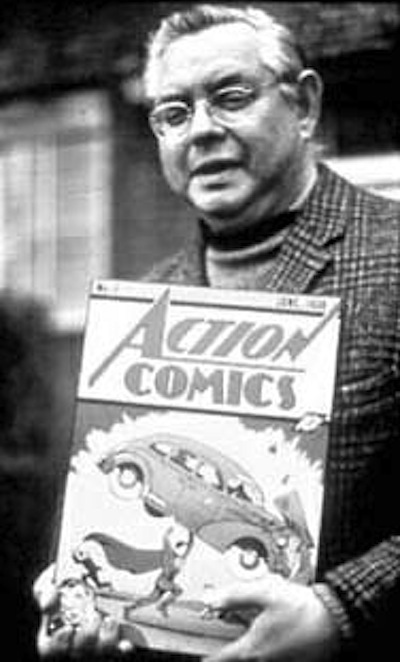
By Jeff Trexler
Other comic news sites are reporting a bombshell development in DC’s legal fight to hold onto the Superman copyright: on Monday, the company filed a court document asserting that the Shuster estate had actually sold its share of the Superman copyright back to DC in 1992 and affirmed this sale in subsequent correspondence.
This was indeed a stunning piece of news — back in 2009, when DC first made this argument. Click below for an explanation of why DC brought it up again in a court filing on Monday.In 2009, DC Comics filed the hotly disputed lawsuit in which it is attempting to get the Superman copyright termination claims thrown out of court on the basis of misconduct by Siegel & Shuster heir lawyer Marc Toberoff. One of the arguments made in the 2009 complaint: the Shuster estate has no legal grounds for filing a termination claim, inasmuch as the estate signed an agreement in 1992 selling all of its copyright interests, including any termination right, to DC in exchange for a pension for Joe Shuster’s sister. The 2009 complaint went to assert that the Shuster estate affirmed this agreement in correspondence after the Siegel heirs filed their own termination claim.
The 1992 agreement and the related argument have been discussed by any number of writers since DC first made the claim, including me here at The Beat, and has been the subject of many court filings over the past three years. DC brought it up again on Monday as part of a standard legal move in a case such as this. Its July 16 filing wasn’t a Perry Mason-esque unveiling of surprising new facts. Rather, it was a routine motion for summary judgment.
In a motion for summary judgment, a party is asking the judge to make a ruling based on the existing case record without going forward with a trial. The factual predicate for such a decision is supposed to be the case’s undisputed facts. That’s why you see the abbreviation “SUF” throughout the most recent filing — it’s a reference to the “Statement of Undisputed Facts” proposed by DC. The summary judgment filing, the proposed SUF and the attached exhibits collect all of the material favorable to DC in order to persuade the judge to make a final judgment in its favor regarding the claims initially filed in the 2009 complaint (as amended somewhat a year later).
This isn’t to say the summary judgment filing is unimportant — to the contrary, it could lead to the end of the case or at least provide the basis of an appeal, as we have already seen following the district court’s historic 2008 summary judgment giving the Siegel heirs half of the Superman copyright. However, what this filing does not do is add unexpected arguments and facts. The whole point of a summary judgment filing is to say there’s nothing new left to discuss.
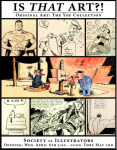 This exhibit of works from Craig Yoe’s original art collection has already garnered stellar accolades – tonight you can see why. And that’s not all …
This exhibit of works from Craig Yoe’s original art collection has already garnered stellar accolades – tonight you can see why. And that’s not all …

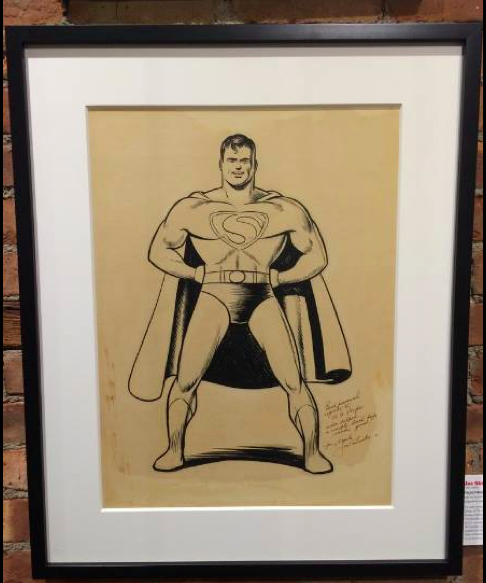






.jpg)






































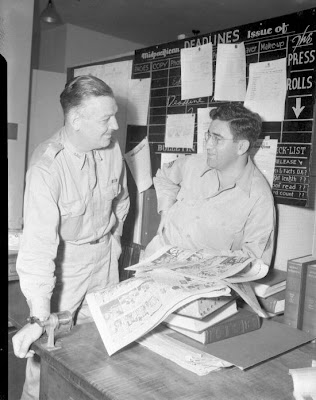



Thanks for this nice write-up and everything, Jeff! Glad you dug the exhibit!